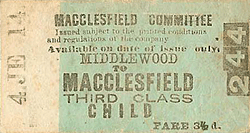 Notes:
Middlewood Higher station was on the 11-mile Macclesfield Committee (MC) railway which opened on 2 August 1869. The MC was a joint company of the Manchester Sheffield & Lincolnshire Railway (MSLR) and the North Staffordshire Railway (NSR). Middlewood Higher was not one of the original stations on the route that linked the NSR at Macclesfield to the MSLR at Marple and it opened as simply Middlewood on 1 April 1879. The station was in an isolated location but at a point where the MC crossed over the London & North Western Railway (LNWR) Stockport and Buxton line. The LNWR also opened a station at Middlewood and the purpose of both was to provide an interchange facility. Notes:
Middlewood Higher station was on the 11-mile Macclesfield Committee (MC) railway which opened on 2 August 1869. The MC was a joint company of the Manchester Sheffield & Lincolnshire Railway (MSLR) and the North Staffordshire Railway (NSR). Middlewood Higher was not one of the original stations on the route that linked the NSR at Macclesfield to the MSLR at Marple and it opened as simply Middlewood on 1 April 1879. The station was in an isolated location but at a point where the MC crossed over the London & North Western Railway (LNWR) Stockport and Buxton line. The LNWR also opened a station at Middlewood and the purpose of both was to provide an interchange facility.
The station was, as its name suggests, in the middle of woodland with very little habitation. It was situated on an embankment to the south of the LNWR Buxton line. The MC line had been double-track since 1871 and the station was provided with two platforms both constructed from timber carried by stilts set into the embankment
 The main facilities were located on the up platform (Macclesfield direction) in a single-storey timber building with a hipped slate roof. A small section of the roof was carried forward over one of the doors on the platform elevation as an awning, supported by brackets, and a ventilation turret rose above the roof ridge at the northern end of the building. A booking office, waiting room, ladies’ room, porters’ room and toilets for both sexes were provided within the building. Middlewood Higher was not connected to mains sewers or a septic tank: the toilets were of the chemical variety and their contents were deposited directly onto the embankment. The main facilities were located on the up platform (Macclesfield direction) in a single-storey timber building with a hipped slate roof. A small section of the roof was carried forward over one of the doors on the platform elevation as an awning, supported by brackets, and a ventilation turret rose above the roof ridge at the northern end of the building. A booking office, waiting room, ladies’ room, porters’ room and toilets for both sexes were provided within the building. Middlewood Higher was not connected to mains sewers or a septic tank: the toilets were of the chemical variety and their contents were deposited directly onto the embankment.
On the down platform there was a simple waiting shelter that had a small booking office attached; this office was so tiny that it was not unlike a furnace to work in when the coke stove was lit - and once in, to get any working surface it was necessary to lower a folding table flap, which blocked the door. The shelter was open to the elements and, owing to the exposed situation of the station, it used to drift up with snow so that it was impossible to get into the little office adjoining.
Middlewood had no road access, but was served by three footpaths which disappeared from a variety of wicket gates on the platforms into the depths of the encompassing wood. At the north end of the station there were steps leading to the down platform of the LNWR station. Connection between the platforms was by a barrow crossing at the north end of the station. A stationmaster’s house was provided to the south of the station, west of the line. A signal box stood north of the station which controlled a crossover but it closed at an unknown date, probably early in the twentieth century.
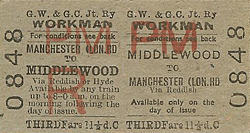 There was little local traffic, but the two stations were quite busy with passengers changing from one line to another. Services were operated by the MSLR and, at the time of opening, there were six trains in each direction on Monday-to-Friday and seven on Saturday, but not all called at Middlewood. On Sunday there were four trains each way. The up services ran to Macclesfield Central and most of the down ones to Manchester London Road. There was little local traffic, but the two stations were quite busy with passengers changing from one line to another. Services were operated by the MSLR and, at the time of opening, there were six trains in each direction on Monday-to-Friday and seven on Saturday, but not all called at Middlewood. On Sunday there were four trains each way. The up services ran to Macclesfield Central and most of the down ones to Manchester London Road.
From the MC point of view Middlewood had been provided to promote interchange of passengers between Macclesfield and Buxton but, to their dismay, many of the passengers using the station were transferring from MC line trains from Bollington and Poynton to use the quicker LNWR route to Stockport and Manchester.
On 25 May 1885 a connecting curve line between the MC and the LNWR lines was built at Middlewood which connected to the MC 19 chains south of the station at Middlewood High Level Junction. The curve turned eastwards away from the MC route and connected to the LNWR line to the east of their station. Passenger trains were operated over the connecting line but they were not a great success and within a few years had been confined to the summer months.
On 1 August 1897 the MSLR changed its name to the Great Central Railway (GCR) and by August 1898 all passenger trains were calling at Middlewood.
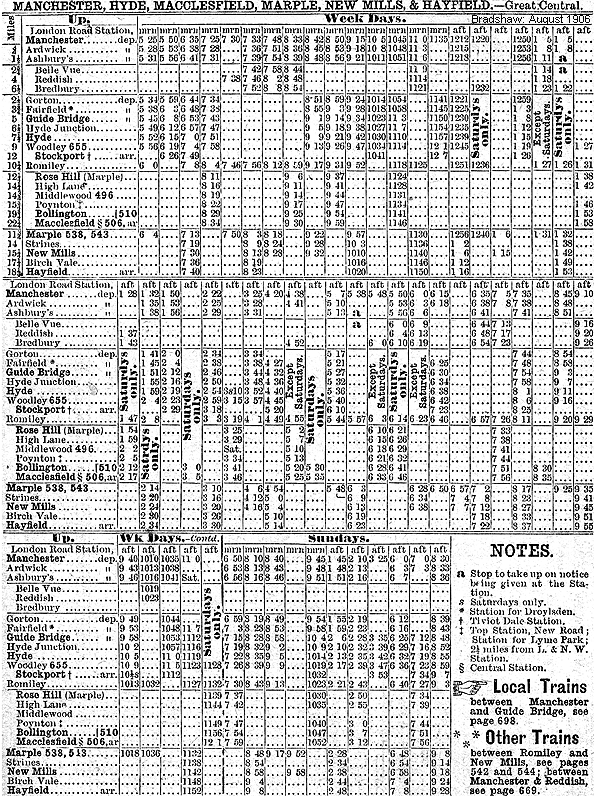
In 1908 the MC altered its title to the GC/NSR Joint Committee.
The April 1910 timetable showed that the passenger service had grown to nine trains each way on Monday-to-Friday and ten on Saturday. Two of the down trains used Hyde or Woodley as their terminus. There were in addition odd Saturdays-only shuttle workings to and from Middlewood.
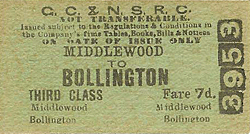 After the First World War the Saturday shuttle services were operated by an experimental Westinghouse petrol-electric railcar that had been introduced by the GCR in 1912. The railcar was not particularly successful and within a few years it was relegated to the Bollington and Macclesfield shuttle, but it continued to make an appearance at Middlewood on the Saturday night service from Romiley to Macclesfield. After the First World War the Saturday shuttle services were operated by an experimental Westinghouse petrol-electric railcar that had been introduced by the GCR in 1912. The railcar was not particularly successful and within a few years it was relegated to the Bollington and Macclesfield shuttle, but it continued to make an appearance at Middlewood on the Saturday night service from Romiley to Macclesfield.
On 1 January 1923 the former MC line became a joint concern of the London & North Eastern Railway (LNER), who absorbed the GCR, and the London Midland & Scottish Railway (LMS) who absorbed the NSR. The LMS also absorbed the LNWR which meant that they became the owners of the low level Middlewood station on the Buxton line.
The last passenger services used the Middlewood Curve line in 1927 (services having been erratic over the years) but it remained open for goods. During the 1920s and ‘30s there was some housing development at Middlewood but it was nowhere near the station which remained a rural backwater.
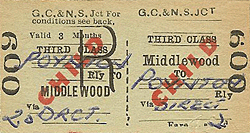 A porter-clerk at the station in the years from 1933 onward recalled that only two passengers regularly joined the early morning workmen’s trains to Manchester - and one of those lived in the station house. There were some regulars, cotton workers in the mills of Bollington, who changed at Middlewood to and from New Mills Newtown, and on Tuesdays and Thursdays the ‘muffin man’ used to come from the bakery at Bollington and take his wares to stations down the Buxton line. Middlewood was also a favourite place for pigeons to be released. On summer Saturdays, however, Middlewood became a hive of activity on summer weekends. There is a pleasant hollow near to the station and a Mr Cooper erected two large tea rooms in it. It became known as ‘Cooper's Hollo’ and it was particularly popular with Sunday School parties as it had plenty of space for games. Special excursions were run on summer Saturdays which, having disgorged trippers at Middlewood, ran to Macclesfield to stand, and it retured later in the evening to pick up the excursionists. A station porter recalled taking over 300 tickets on some Saturdays and seeing the platform jam-packed with returning excursionists. A porter-clerk at the station in the years from 1933 onward recalled that only two passengers regularly joined the early morning workmen’s trains to Manchester - and one of those lived in the station house. There were some regulars, cotton workers in the mills of Bollington, who changed at Middlewood to and from New Mills Newtown, and on Tuesdays and Thursdays the ‘muffin man’ used to come from the bakery at Bollington and take his wares to stations down the Buxton line. Middlewood was also a favourite place for pigeons to be released. On summer Saturdays, however, Middlewood became a hive of activity on summer weekends. There is a pleasant hollow near to the station and a Mr Cooper erected two large tea rooms in it. It became known as ‘Cooper's Hollo’ and it was particularly popular with Sunday School parties as it had plenty of space for games. Special excursions were run on summer Saturdays which, having disgorged trippers at Middlewood, ran to Macclesfield to stand, and it retured later in the evening to pick up the excursionists. A station porter recalled taking over 300 tickets on some Saturdays and seeing the platform jam-packed with returning excursionists.
With the outbreak of the Second World War on 3 September 1939 the railways came under government control. From 1 November 1939 the LNER reduced its services between Manchester London Road and Macclesfield from 13 to 8. These cuts were later seen to be excessive, and by the end of the war more services were running than in late 1939.
On 1 January 1948 Middlewood became part of British Railways (London Midland Region) (BR[LMR]). BR renamed the station Middlewood Higher on 25 July 1951, while the former LNWR station became Middlewood Lower.
The Middlewood Curve was closed to completely in 1955.
The September 1956 timetable showed 11 trains in each direction Monday-to-Friday. On Saturdays there were 12 up and 13 down trains. There were only Sunday services in the summer months by this time.
 On 17 June 1957 DMUs were introduced onto the former MC line. The Macclesfield service remained irregular with 15 trains each way, but the improvement was not as dramatic as on other lines in the area as most trains travelled to Manchester via the slower Guide Bridge route. As a result usage did not grow as it should have done. On 17 June 1957 DMUs were introduced onto the former MC line. The Macclesfield service remained irregular with 15 trains each way, but the improvement was not as dramatic as on other lines in the area as most trains travelled to Manchester via the slower Guide Bridge route. As a result usage did not grow as it should have done.
While the down platform had always been shorter this was exacerbated in 1955 when part of the embankment collapsed and took the platform and waiting room with it. Rather than rebuild the platform it was shortened to just three coach lengths which sufficed until closure. Being in a remote spot BR(LMR) closed Middlewood Higher on 7 November 1960.
A few years after closure the station building and the up platform were demolished but the down platform was left in place. Passenger services continued to pass through Middlewood Higher until 3 January 1970 and the line closed completely on 5 January 1970. Track-lifting commenced late in 1970, and was completed by March 1971.
In 1985 a footpath and cycleway called the Middlewood Way was opened through the site of the station. By that time the down platform had been demolished.
Tickets from Michael Stewart, Bradshaw from Chris Hind, route map drawn by Alan Young
Sources:
To see other stations on the Marple and Macclesfield line click the name:
Rose Hill Marple, High Lane, Higher Poynton, Bollington
Macclesfield MB&MR and Macclesfield Central
|

higher_old9.jpg)
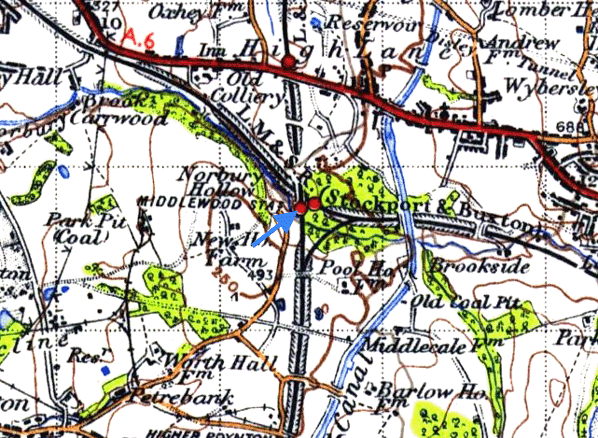
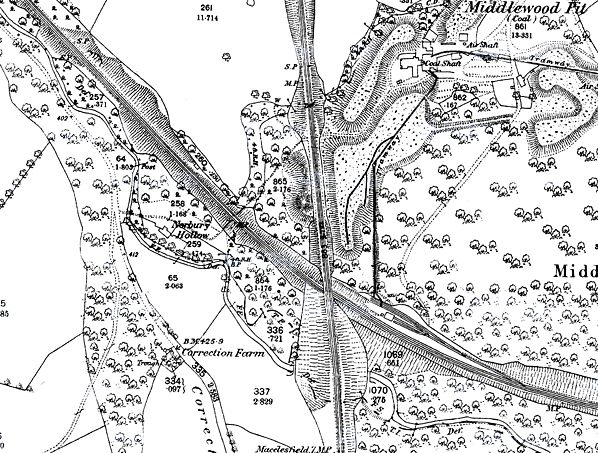
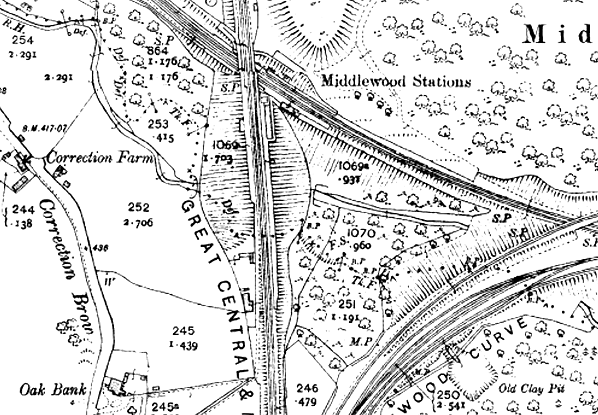
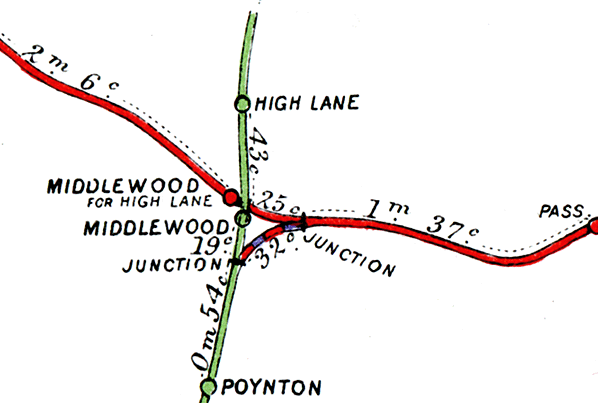
higher_old10.jpg)
higher_old2.jpg)
higher_old1.jpg)
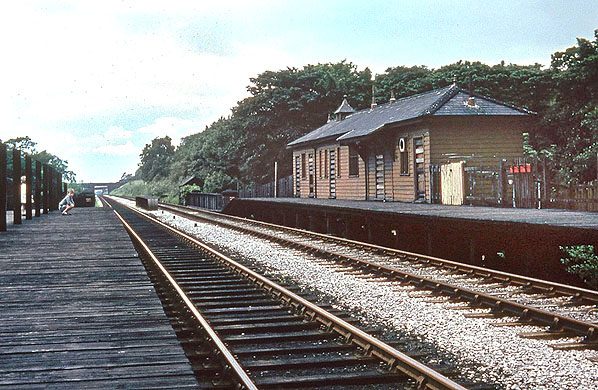
higher_old5.jpg)
higher_old8.jpg)
higher2.jpg)
.jpg)
 Notes:
Middlewood Higher station was on the 11-mile Macclesfield Committee (MC) railway which opened on 2 August 1869. The MC was a joint company of the Manchester Sheffield & Lincolnshire Railway (MSLR) and the North Staffordshire Railway (NSR). Middlewood Higher was not one of the original stations on the route that linked the NSR at Macclesfield to the MSLR at Marple and it opened as simply Middlewood on 1 April 1879. The station was in an isolated location but at a point where the MC crossed over the London & North Western Railway (LNWR) Stockport and Buxton line. The LNWR also opened a station at Middlewood and the purpose of both was to provide an interchange facility.
Notes:
Middlewood Higher station was on the 11-mile Macclesfield Committee (MC) railway which opened on 2 August 1869. The MC was a joint company of the Manchester Sheffield & Lincolnshire Railway (MSLR) and the North Staffordshire Railway (NSR). Middlewood Higher was not one of the original stations on the route that linked the NSR at Macclesfield to the MSLR at Marple and it opened as simply Middlewood on 1 April 1879. The station was in an isolated location but at a point where the MC crossed over the London & North Western Railway (LNWR) Stockport and Buxton line. The LNWR also opened a station at Middlewood and the purpose of both was to provide an interchange facility.  The main facilities were located on the up platform (Macclesfield direction) in a single-storey timber building with a hipped slate roof. A small section of the roof was carried forward over one of the doors on the platform elevation as an awning, supported by brackets, and a ventilation turret rose above the roof ridge at the northern end of the building. A booking office, waiting room, ladies’ room, porters’ room and toilets for both sexes were provided within the building. Middlewood Higher was not connected to mains sewers or a septic tank: the toilets were of the chemical variety and their contents were deposited directly onto the embankment.
The main facilities were located on the up platform (Macclesfield direction) in a single-storey timber building with a hipped slate roof. A small section of the roof was carried forward over one of the doors on the platform elevation as an awning, supported by brackets, and a ventilation turret rose above the roof ridge at the northern end of the building. A booking office, waiting room, ladies’ room, porters’ room and toilets for both sexes were provided within the building. Middlewood Higher was not connected to mains sewers or a septic tank: the toilets were of the chemical variety and their contents were deposited directly onto the embankment.  There was little local traffic, but the two stations were quite busy with passengers changing from one line to another. Services were operated by the MSLR and, at the time of opening, there were six trains in each direction on Monday-to-Friday and seven on Saturday, but not all called at Middlewood. On Sunday there were four trains each way. The up services ran to Macclesfield Central and most of the down ones to Manchester London Road.
There was little local traffic, but the two stations were quite busy with passengers changing from one line to another. Services were operated by the MSLR and, at the time of opening, there were six trains in each direction on Monday-to-Friday and seven on Saturday, but not all called at Middlewood. On Sunday there were four trains each way. The up services ran to Macclesfield Central and most of the down ones to Manchester London Road.
 After the First World War the Saturday shuttle services were operated by an experimental Westinghouse petrol-electric railcar that had been introduced by the GCR in 1912. The railcar was not particularly successful and within a few years it was relegated to the Bollington and Macclesfield shuttle, but it continued to make an appearance at Middlewood on the Saturday night service from Romiley to Macclesfield.
After the First World War the Saturday shuttle services were operated by an experimental Westinghouse petrol-electric railcar that had been introduced by the GCR in 1912. The railcar was not particularly successful and within a few years it was relegated to the Bollington and Macclesfield shuttle, but it continued to make an appearance at Middlewood on the Saturday night service from Romiley to Macclesfield. A porter-clerk at the station in the years from 1933 onward recalled that only two passengers regularly joined the early morning workmen’s trains to Manchester - and one of those lived in the station house. There were some regulars, cotton workers in the mills of Bollington, who changed at Middlewood to and from New Mills Newtown, and on Tuesdays and Thursdays the ‘muffin man’ used to come from the bakery at Bollington and take his wares to stations down the Buxton line. Middlewood was also a favourite place for pigeons to be released. On summer Saturdays, however, Middlewood became a hive of activity on summer weekends. There is a pleasant hollow near to the station and a Mr Cooper erected two large tea rooms in it. It became known as ‘Cooper's Hollo’ and it was particularly popular with Sunday School parties as it had plenty of space for games. Special excursions were run on summer Saturdays which, having disgorged trippers at Middlewood, ran to Macclesfield to stand, and it retured later in the evening to pick up the excursionists. A station porter recalled taking over 300 tickets on some Saturdays and seeing the platform jam-packed with returning excursionists.
A porter-clerk at the station in the years from 1933 onward recalled that only two passengers regularly joined the early morning workmen’s trains to Manchester - and one of those lived in the station house. There were some regulars, cotton workers in the mills of Bollington, who changed at Middlewood to and from New Mills Newtown, and on Tuesdays and Thursdays the ‘muffin man’ used to come from the bakery at Bollington and take his wares to stations down the Buxton line. Middlewood was also a favourite place for pigeons to be released. On summer Saturdays, however, Middlewood became a hive of activity on summer weekends. There is a pleasant hollow near to the station and a Mr Cooper erected two large tea rooms in it. It became known as ‘Cooper's Hollo’ and it was particularly popular with Sunday School parties as it had plenty of space for games. Special excursions were run on summer Saturdays which, having disgorged trippers at Middlewood, ran to Macclesfield to stand, and it retured later in the evening to pick up the excursionists. A station porter recalled taking over 300 tickets on some Saturdays and seeing the platform jam-packed with returning excursionists.  On 17 June 1957 DMUs were introduced onto the former MC line. The Macclesfield service remained irregular with 15 trains each way, but the improvement was not as dramatic as on other lines in the area as most trains travelled to Manchester via the slower Guide Bridge route. As a result usage did not grow as it should have done.
On 17 June 1957 DMUs were introduced onto the former MC line. The Macclesfield service remained irregular with 15 trains each way, but the improvement was not as dramatic as on other lines in the area as most trains travelled to Manchester via the slower Guide Bridge route. As a result usage did not grow as it should have done. 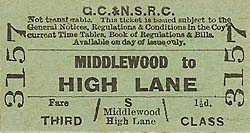
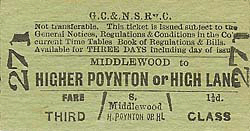
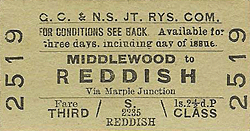
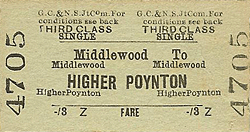
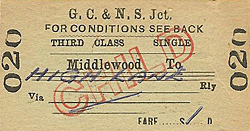
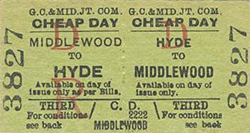
higher_old6.jpg)
lower_thumb.jpg)
higher_old_thumb8.jpg)
higher_old_thumb3.jpg)
higher_old_thumb7.jpg)
higher_thumb3.jpg)
higher_thumb1.jpg)
lower_thumb.jpg)
higher_thumb4.jpg)
higher_thumb5.jpg)
higher_thumb6.jpg)
thumb.jpg)
thumb.jpg)

 Home Page
Home Page